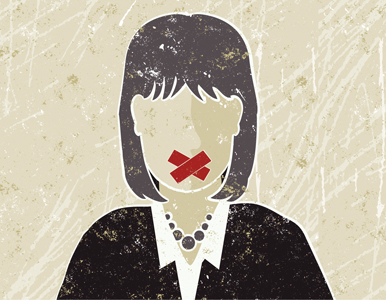
In the author’s note of her forthcoming book, No Visible Bruises: What We Don’t Know About Domestic Violence Can Kill Us, Rachel Louise Snyder details her dying stepmother’s admission that years earlier she’d been the victim of abuse. “Why had she never told me?” Snyder wonders.
Like so many questions surrounding domestic violence, there’s no firm answer. “It underscored how much shame and how much silence there still is around this,” she says.
Snyder’s hoping to change that. No Visible Bruises—due out May 7—takes a no-holds-barred look at an issue that’s plagued humanity since the beginning of time. A professor of journalism and creative writing she aims to both educate readers and impact them emotionally through her writing.
The genesis of the project came when Snyder met noted anti-domestic violence advocate Suzanne Dubus, which led to an article on the subject she wrote for the New Yorker in 2013. She was engrossed in writing the book when the #MeToo movement began building steam in the fall of 2017.
“Domestic violence is not something new, nor is sexual assault, but I think #MeToo opened the door for conversations to happen on a national level and on a policy level,” she says. “For me, it was assurance that I was on the right track, because I didn’t know if anyone would care.”
Snyder sought out women to share their stories. She sat in on trials, tagged along with police, and spoke to domestic violence advocates. Finding victims, she says, was not difficult.
“Look to your left, look to your right—they’re everywhere,” she says. “They’re 25 percent of women in the country, so you can’t walk down the street without there being a victim.”
In the first section of No Visible Bruises, one of Esquire magazine’s 25 most anticipated books of 2019, Snyder explains why victims don’t always remove themselves from abusive situations.
“We don’t understand the psychological dynamics,” she says. “The fact is they do leave and they get killed. If you do a Google search for ‘domestic violence homicides’ along with the word ‘estranged,’ you’ll find that most victims who are killed are estranged, meaning they left. They know how dangerous it is to leave, so they take baby steps. What we think of as an event is actually more like a process.”
One Snyder was surprised to learn that her late stepmother endured. About three weeks before she died, she told Snyder from the hospital bed in her home that both her first marriage and her childhood home had been abusive.
It was a jarring admission. Snyder decided to dedicate the book to her stepmother, but she is under no illusions that her work will solve the problem. Her goal is simply to move the discussion forward.
“At the end of the day I think we need to be able to say to men, ‘You can experience your full range of human emotions, not just anger,’ and we need to be able to say to women, ‘Your anger is justified, not just your tears,’” she says.
Snyder has always been unwavering in her desire to understand the epidemic from all sides. She spent much of her research and reporting time interviewing and studying perpetrators and found that several risk factors led to their abusive behavior, including access to a gun, a prior history of domestic violence, and economic instability.
“People don’t often talk to them, they don’t hear their side of this, but we have just as much to learn from them,” she says. “If it takes the average victim seven or eight times before she manages to break free of an abuser, I don’t think we can expect batterers to go through one course of intervention and be anti-violent. It takes time and resources. I absolutely think someone can be reformed—but it’s not easy. But what is our alternative?”
Another question to which there appears to be no clear answer.